Understanding kitchen sink materials and how they can transform your space
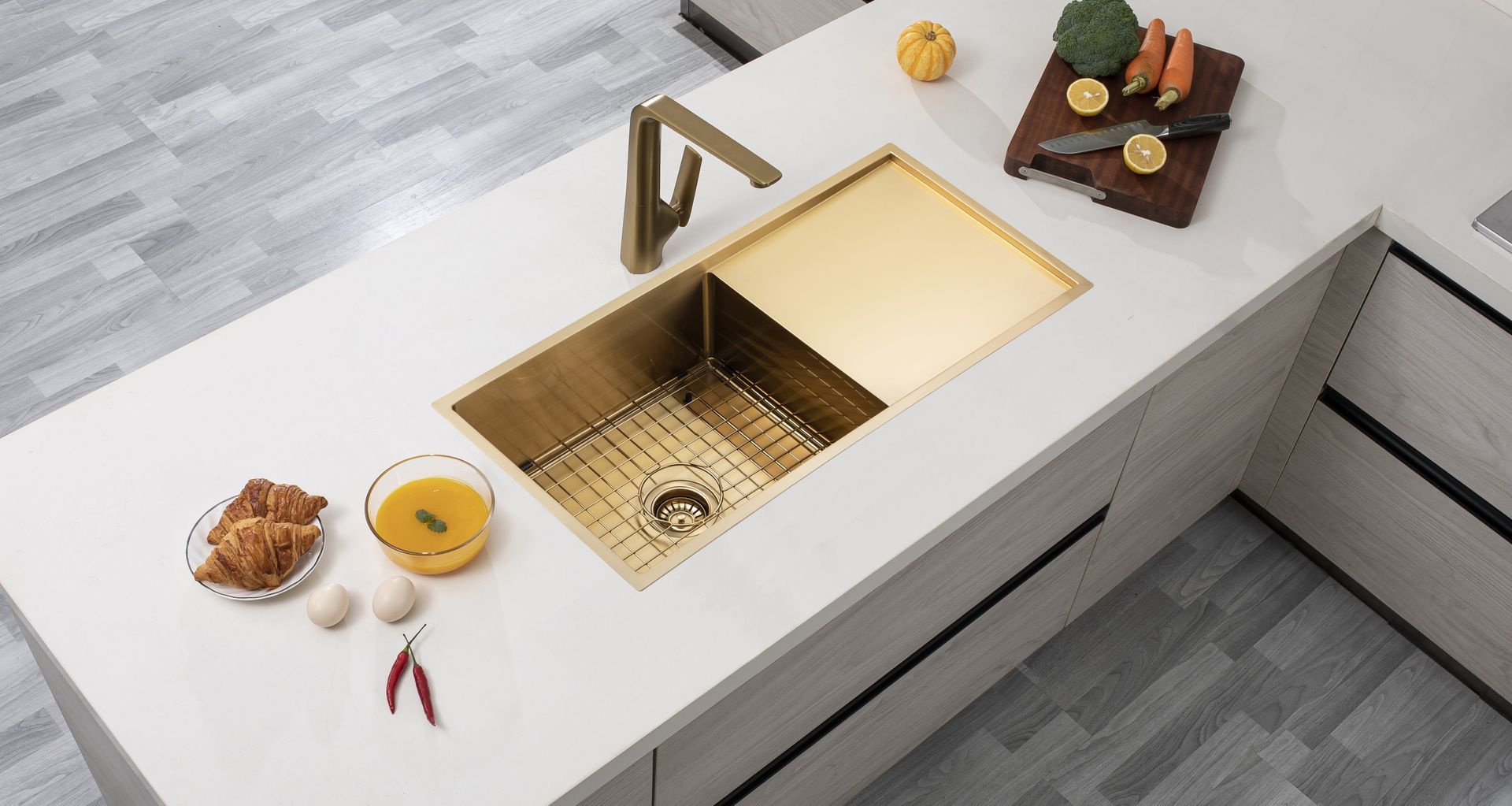
Simply put, the material of a kitchen sink plays a crucial role in determining its functionality and aesthetic appeal. Sinks come in a range of materials, each offering unique benefits that can influence the overall ambience and efficiency of your kitchen. Choosing the right material ensures that your sink not only complements your kitchen's design but also effectively meets your daily needs.
Types of kitchen sink materials
1. Stainless steel
Stainless steel sinks are a very popular choice for modern kitchens in Australia due to their resiliency, versatility, and sleek appearance. This type of sink is available in various styles, including undermount, top mount, and farmhouse designs, and they complement a wide range of kitchen decors, from contemporary to traditional. Additionally, their affordability and longevity make them a cost-effective option for homeowners looking for a reliable and stylish sink.
Advantages: Stainless steel sinks are exceptionally resistant to impact and corrosion, withstanding daily wear and tear with ease.
Disadvantages: While stainless steel sinks are quite resilient, they have a tendency to show water spots, fingerprints, and scratches more readily than other sink materials.
Best for: Transitional kitchens that blend elements of traditional and contemporary kitchens. A stainless steel sink, with its neutral appearance, fits perfectly in this blended environment, seamlessly pairing with various styles while offering excellent functionality.
Estimated cost: $400 to $1,200

2. Fireclay
A fireclay sink is a strong and stylish addition to any kitchen, known for its timeless appeal and robust construction. Made from moulded clay that is fired at extremely high temperatures, fireclay sinks offer a non-porous, glossy finish that is resistant to stains, scratches, and chipping. Available in various shapes and sizes, fireclay sinks can accommodate a range of kitchen layouts, providing a practical and elegant focal point.
Advantages: Fireclay sinks have a robust and non-porous surface that can withstand thermal shock, making them highly durable and long-lasting.
Disadvantages: While fireclay sinks come in a range of neutral colours, they are limited to that selection, leaving you with only a small handful of choices compared to other materials.
Best for: The durability of a fireclay sink makes it an excellent choice for busy kitchens where resiliency and ease of maintenance are essential. Their classic, clean lines and deep basins make them a perfect fit for traditional, farmhouse, or vintage kitchen designs, adding both functionality and aesthetic charm.
Estimated cost: $600 to $1,500
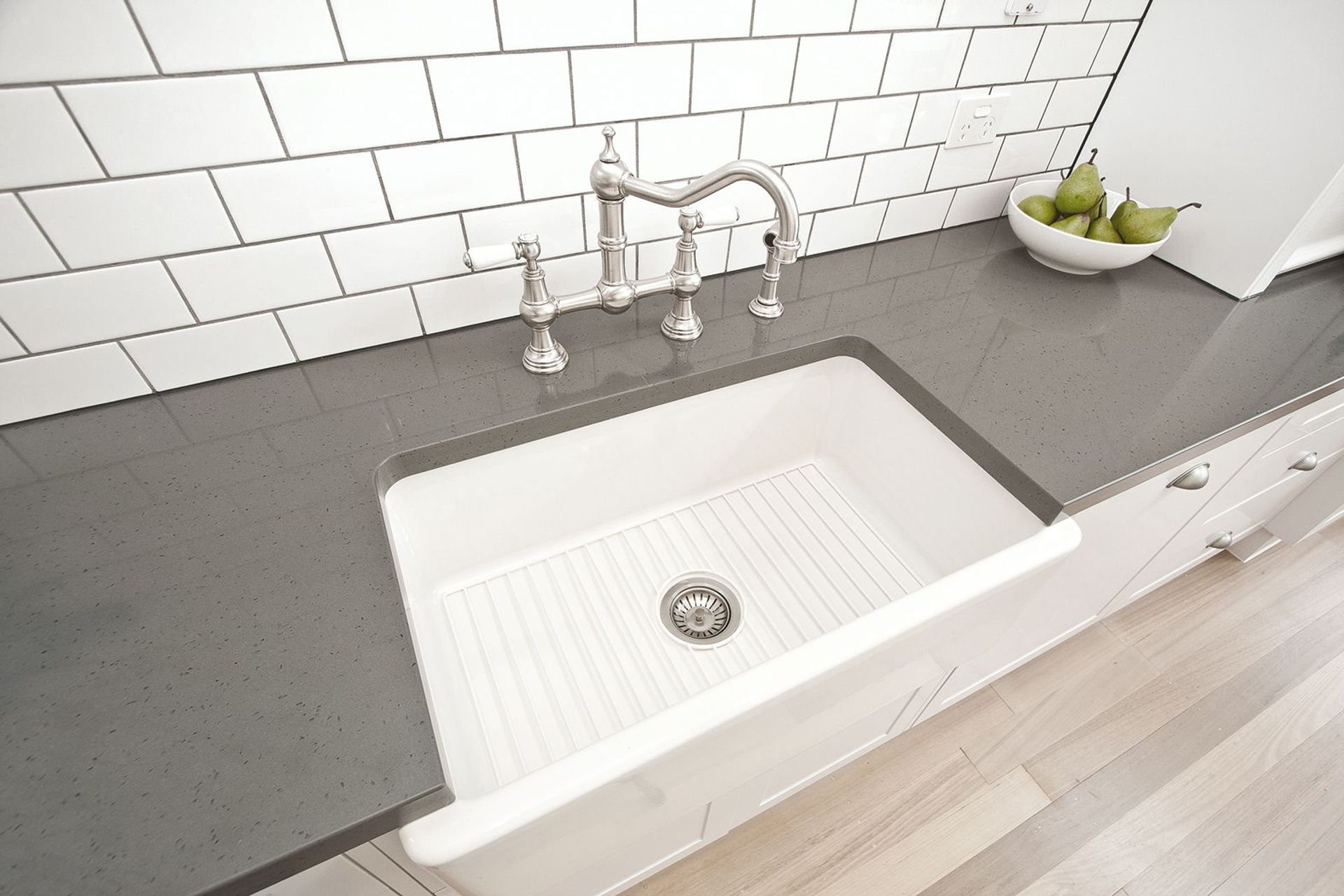
3. Ceramic
A ceramic sink is a classic and elegant addition to any kitchen, renowned for its smooth, glossy finish and timeless appeal. They are available in various styles and sizes, from traditional farmhouse designs to sleek modern models. Their combination of beauty and functionality makes ceramic sinks a popular choice for those seeking both style and resiliency in their kitchen fixtures.
Advantages: Ceramic sinks' non-porous glazed surface prevents liquid absorption, making them impervious to discolouration.
Disadvantages: Despite their resistance to discolouration, they are prone to chipping and cracking from impact damage, making them not the best choice for households with heavy cookware.
Best for: Ceramic sinks are quite versatile and fit into a variety of different kitchen styles. They are especially well-suited for cottage and coastal kitchens, where their light and bright appearance enhances the airy, relaxed atmosphere. Additionally, the non-porous, easy-to-clean surface makes them a practical choice for busy kitchens.
Estimated cost: Starts at $800
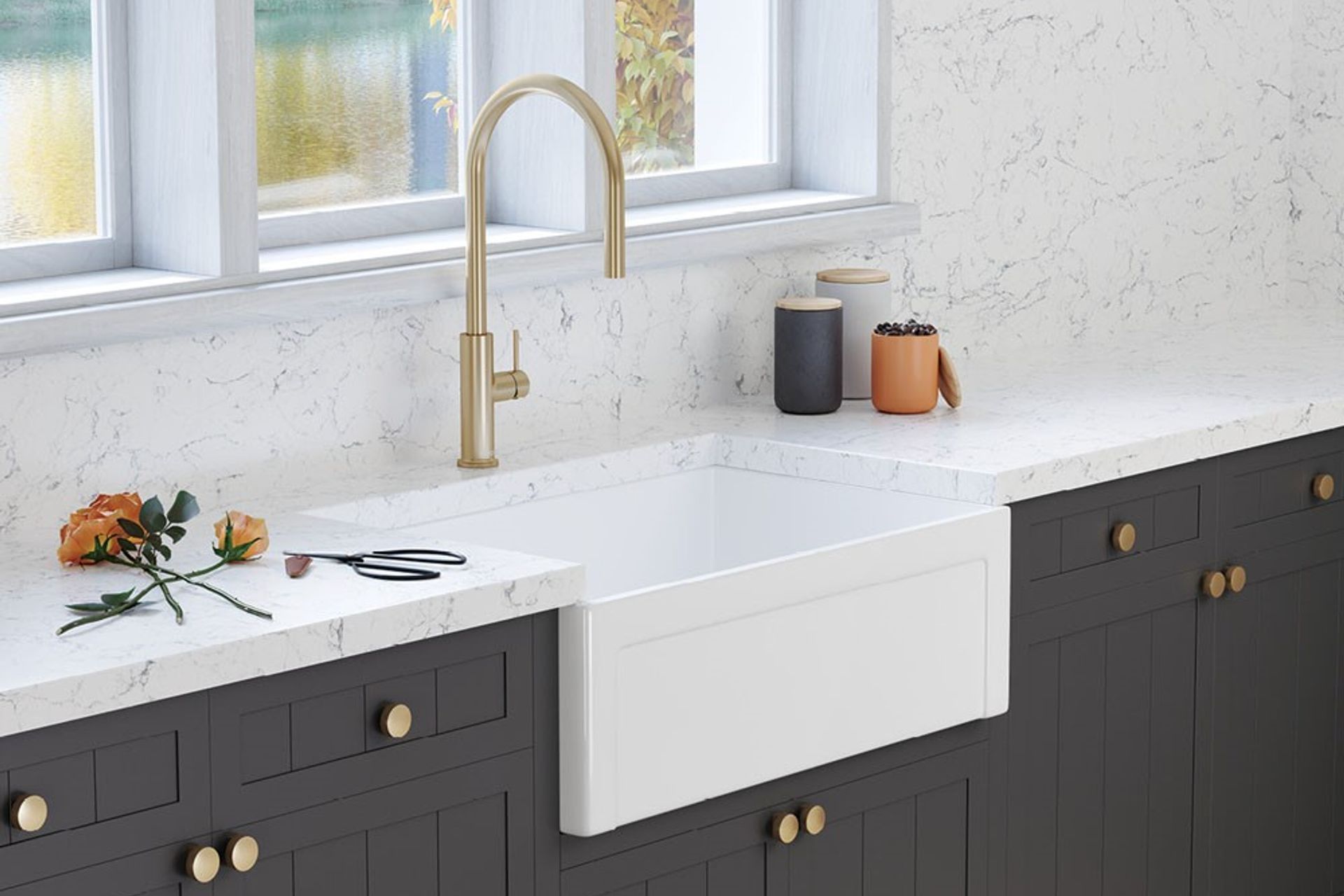
4. Composite granite
Composite granite kitchen sinks offer longevity and style through a blend of granite stone and acrylic resins. This combination creates a highly resilient material that withstands the rigours of daily kitchen use, which includes high heat, heavy impacts, and scratching. This type of sink comes in a myriad of colours and styles that offer a sophisticated and modern look that complements any kitchen. Between their aesthetic appeal and practical benefits, composite granite sinks are well-liked by homeowners seeking beauty and functionality in their kitchen fixtures.
Advantages: Composite granite kitchen sinks provide sound-dampening properties, which reduce the noise of running water and clattering dishes.
Disadvantages: If not properly cleaned, light-coloured composite granite sinks can show stains from certain foods and beverages.
Best for: Composite granite sinks captivate onlookers with their sophisticated and luxurious appearance. This elegant look is achieved by blending high-end natural stone with acrylic resin, resulting in a strong and visually stunning sink that adds a touch of refinement to any kitchen.
Estimated cost: $600 to $1,200
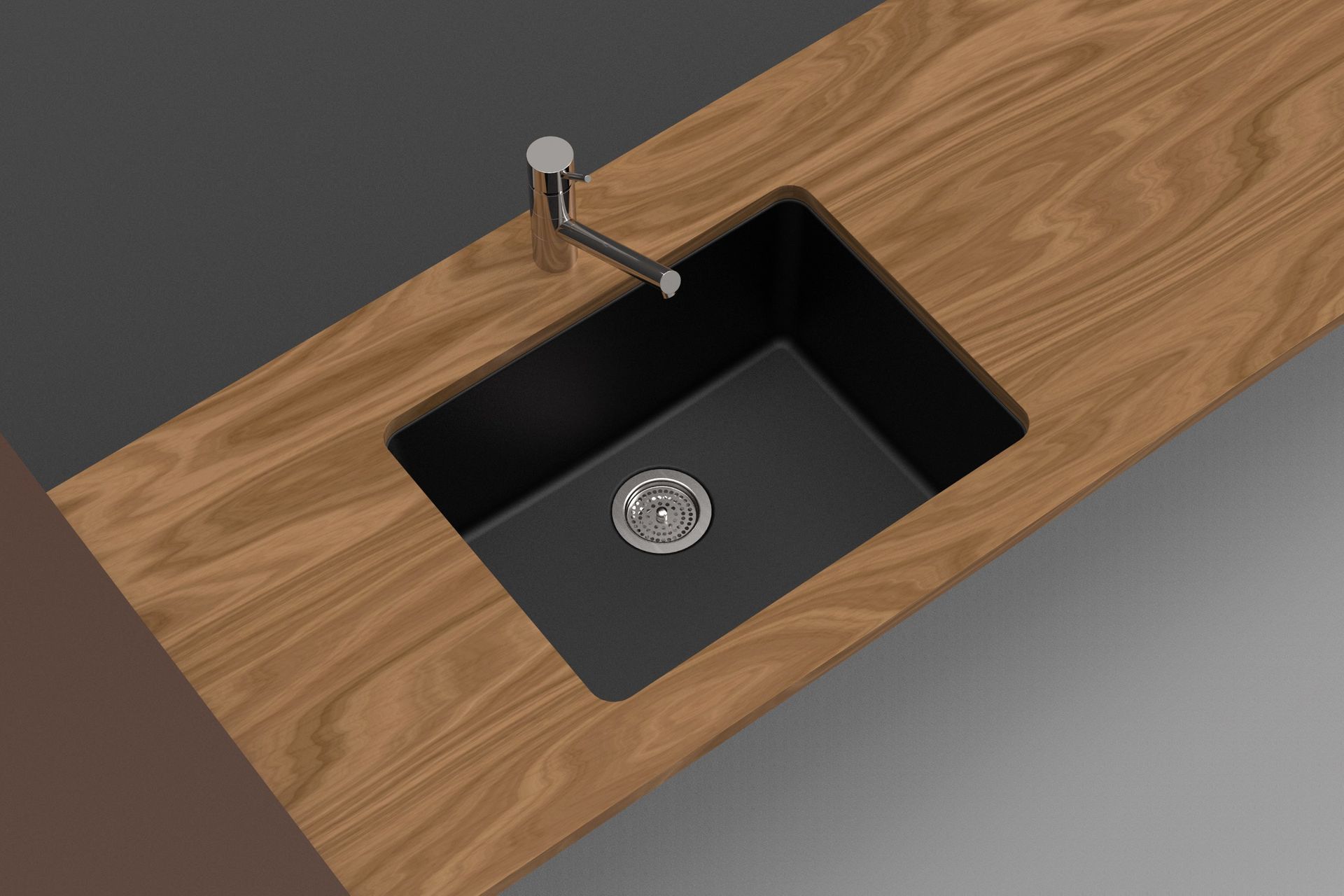
5. Quartz composite
Quartz composite sinks are a contemporary option for modern kitchens. They offer a blend of natural quartz and resin that results in a robust, stylish, and functional sink. These sinks are available in a variety of colours and designs, making it easy to match them with your kitchen decor. Quartz composite sinks are known for their high resistance to heat, stains, and scratches, providing a long-lasting and low-maintenance solution for busy kitchens.
Advantages: Quartz composite sinks are resistant to scratches, stains, and heat, making them ideal for heavy use. Their non-porous surface also prevents the growth of bacteria, ensuring a hygienic kitchen environment. Additionally, they come in a wide range of colours and styles, allowing for greater design flexibility.
Disadvantages: Quartz composite sinks can be more expensive than other materials. They are also heavier, which may require additional support during installation. Additionally, while they are highly resistant to damage, they can still be susceptible to chipping if a heavy object is dropped on them.
Best for: Quartz composite sinks are perfect for homeowners looking for stylish and sturdy sinks that can withstand the rigours of a busy kitchen. They are particularly well-suited for modern and contemporary kitchen designs, where their sleek appearance and wide range of colour options can be fully appreciated.
Estimated cost: $600 to $1,200

6. Cast iron
Cast iron sinks are known for their incredible durability and classic appearance. They are coated with an enamel layer, which provides a glossy and smooth finish that adds to the aesthetic of any kitchen. Furthermore, cast iron sinks are available in a range of colours, making it easy to coordinate with various kitchen designs.
Advantages: Cast iron sinks are highly durable and impervious to chipping and cracking. The enamel coating provides a non-porous surface that is easy to clean and maintain. They also offer a timeless and elegant look that can enhance the overall aesthetics of any kitchen.
Disadvantages: Cast iron sinks are very heavy, requiring sturdy countertops and cabinets for support. They can also be more expensive and may require professional installation. The enamel coating, while sturdy, can be damaged by heavy impacts or abrasive cleaners.
Best for: Homeowners seeking a rugged, classic sink with a glossy finish. Ideal for traditional and farmhouse-style kitchens.
Estimated cost: $300 - $1,000
7. Copper
Copper sinks offer a unique and stylish option for kitchen design. Over time, copper develops a natural patina, which adds to the kitchen's character and charm. These sinks are available in various styles, such as farmhouse and undermount.
Advantages: Copper has natural antimicrobial properties, making it a hygienic choice for the kitchen. It is also highly durable and resistant to rust and corrosion. The evolving patina gives copper sinks a distinctive and appealing look.
Disadvantages: Copper sinks require regular maintenance to prevent tarnishing and preserve their appearance. They can be more expensive and are susceptible to scratches and dents from heavy impacts.
Best for: Homeowners looking for a unique, stylish sink with natural antimicrobial properties. Perfect for rustic, farmhouse, and eclectic kitchen designs.
Estimated cost: Starts at $1,000
8. Porcelain
Porcelain sinks are made using porcelain clay, which is finer and denser than standard ceramic. They offer a classic and elegant look that suits a variety of kitchen styles. These sinks are typically crafted from fired clay and finished with a glossy, smooth surface.
Advantages: Porcelain sinks are highly resistant to stains and chipping and easy to clean. Their smooth surface provides a hygienic and low-maintenance option for the kitchen. They also come in various shapes and colours to match different design preferences.
Disadvantages: Porcelain sinks can be prone to scratching and may chip if heavy objects are dropped on them. They also require regular cleaning to maintain their glossy appearance and prevent discolouration.
Best for: Homeowners seeking a classic, elegant sink that is easy to clean. Ideal for traditional and vintage-inspired kitchen designs.
Estimated cost: $800 to $1,500
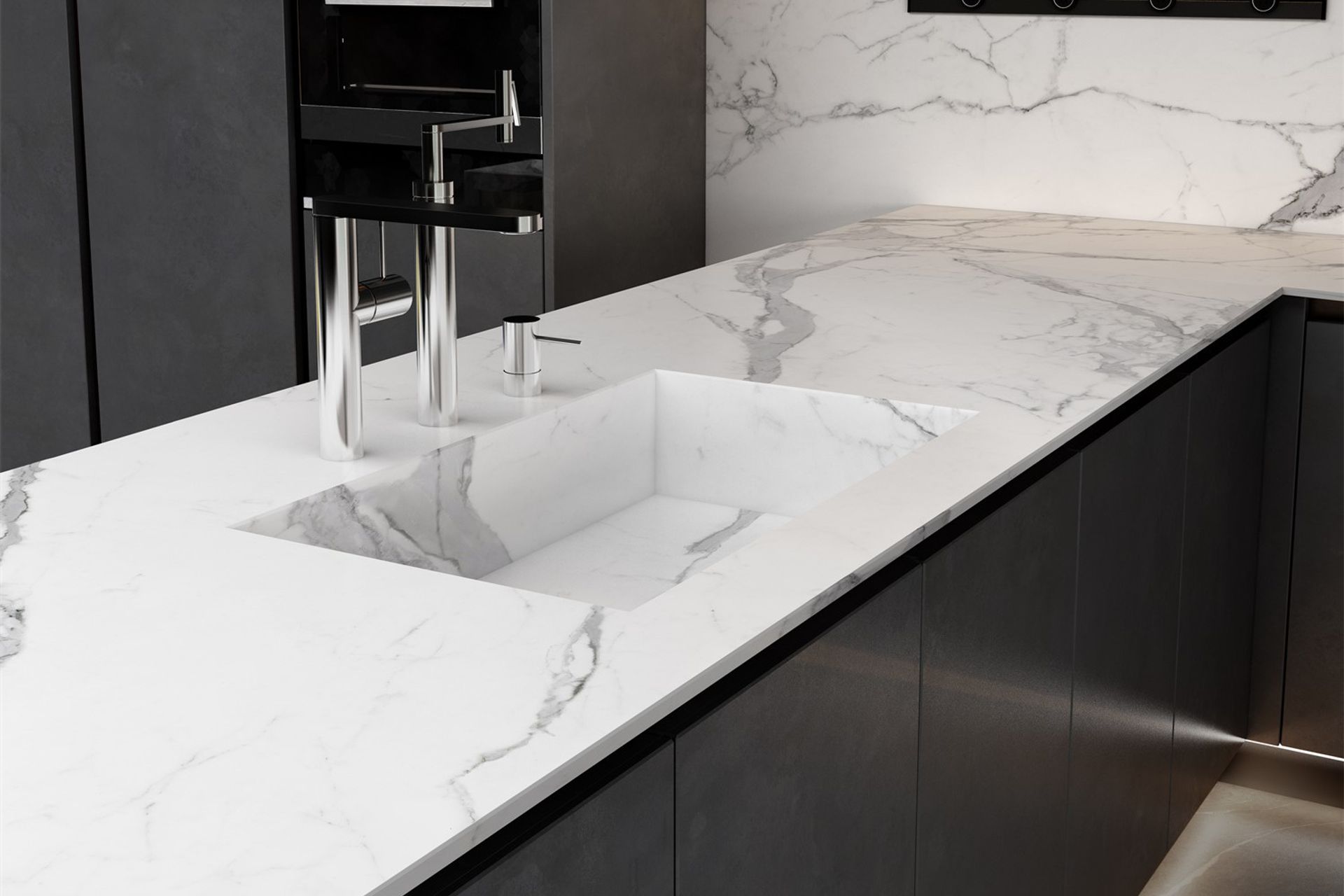
9. Acrylic
Acrylic sinks are lightweight and versatile; they are made from durable plastic and can be moulded into various shapes and sizes. They offer a budget-friendly option for homeowners looking for a functional and aesthetically pleasing sink.
Advantages: Acrylic sinks are easy to install due to their lightweight nature. They are available in a wide range of colours and styles, providing flexibility in kitchen design. Acrylic is also resistant to stains and is easy to clean and maintain.
Disadvantages: Acrylic sinks are less durable than other materials and can scratch or dent more easily. They may also be susceptible to heat damage, so caution is needed when placing hot pots and pans in the sink.
Best for: Homeowners looking for an affordable, lightweight sink with a variety of design options. Suitable for modern and contemporary kitchens.
Estimated cost: $500 to $1,000
Kitchen sink designs to consider
While looking at your different material options, you’ll also need to the design choices too — a key aspect to inform your final decision. Kitchen sink designs are varied, each offering unique benefits that cater to different kitchen needs and styles. They are also incredibly important for both the functionality and aesthetics of a kitchen, serving as a central element in daily meal preparation and clean-up activities. Here are some popular options to consider:
Top mount: This is installed from above the benchtop, with a visible rim that rests on the surface. It is suitable for various countertop materials.
Undermount: Installed beneath the countertop for a seamless look, ideal for solid-surface countertops like granite or quartz.
Single bowl: One deep basin, perfect for spacious cleaning and modern kitchen aesthetics.
Double bowl: Two separate basins for multitasking, allowing simultaneous washing and rinsing.
Bar sinks: Compact and versatile, great for secondary use in small spaces or as prep sinks.
Butler sinks: Deep, wide basins with an exposed front panel, adding rustic charm and ample space for large items.
Square sinks: Modern and sleek with sharp edges, crafted from strong materials like stainless steel or composite granite.
Related article: An in-depth look at kitchen sink designs for modern Australian homes
Find the right material for your kitchen sink
There is an array of different materials available for kitchen sinks on the market in Australia. As with design, the material plays a crucial role in influencing the aesthetics and functionality of your kitchen. It can feel like a tricky situation when you weigh the pros and cons and compare them to the other aspects of your kitchen. However, with an in-depth look at the different materials available and what each type contributes, you’ll be able to find the right material for your kitchen sink.
Related article: Kitchen sink sizes — tips on choosing the right fit
